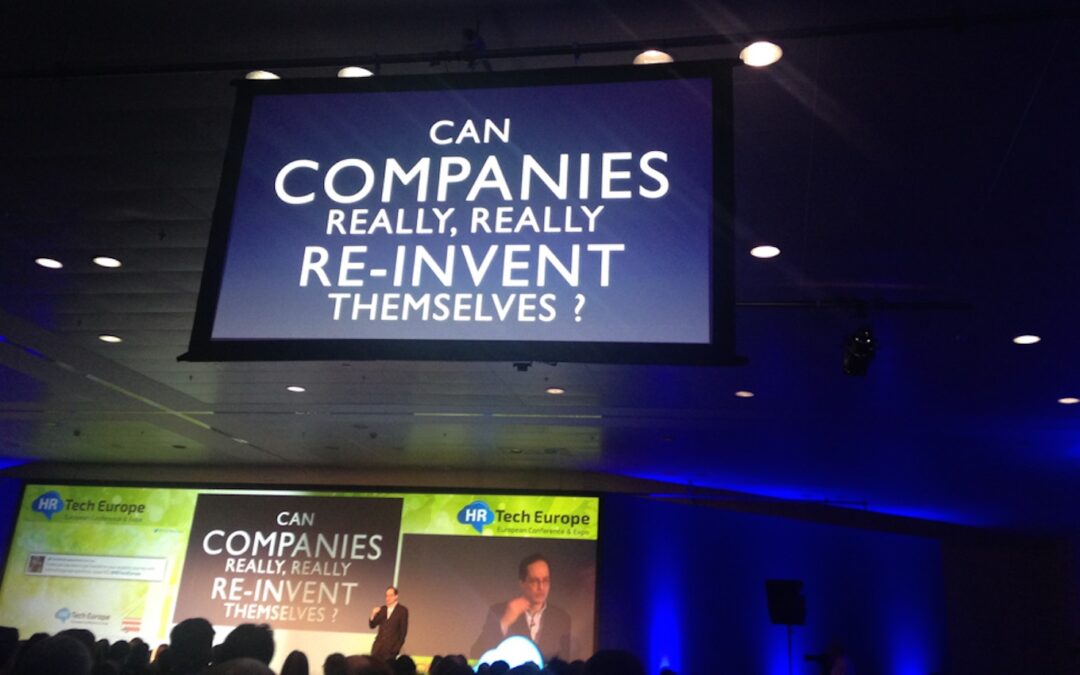I gave a couple of talks about how we can move beyond thinking about social platforms and tools as simply collaboration technologies, and begin to build on their affordances to create new organisational structures and ways of working.
In the social collaboration stream, I shared one of our basic methods for creating and managing digital transformation actions by focusing on different needs at each level of the firm in terms of structure, culture and technology, and then bringing these recommendations together to form the basis of an agile change programme:
- At the strategic level, focus on joining up operations better, creating shared platforms and a culture of collaboration.
- At the key process level, focus on applying collaboration technology to create ‘social surrounds’ that can be wrapped around process stages to socialise information, improve communication and deal with exceptions, problems and process improvement in an open and networked way.
- At the use case level, focus on listening to the workforce about pain points and broken processes that can be fixed, or perhaps re-designed, using social platforms and tools.
From this analysis, we create a pipeline of individual recommendations (much like an ‘icebox’ in agile development) that cover technology, design, culture, practice, management and so on, and then evaluate each of them in terms of expected difficulty, cost, benefit and organisational impact. Based on changing needs and priorities, organisations can then create transformation sprints, or mini-projects, to deliver against a selection of these recommended actions.
On the main stage, I talked about the bigger picture of technology-led organisational transformation and argued that we need to inject more of an HR voice into how we manage and measure the process.
Overall, we believe the goal of digital transformation is to create (and develop) the organisational capabilities required to compete in a rapidly changing and VUCA world of business. A good starting point for understanding these capabilities is to analyse changing market dynamics that are expected to impact on the company, and then to express what the organisation needs to be able to do in clear, simple, human-readable form, much like an agile user story. By creating relevant organisational health indicators from a combination of social network data and human input (it can be as simple as asking employees to rate a given capability), we can then track how our digital transformation actions are succeeding in developing the target capabilities.
One of the innovations of this model is that digital transformation is not driven purely from the top, or by the CIO/IT function, or indeed by hand waving external consultants, but rather by the local leaders, managers and workers who need their part of the organisation to function well so they can do their jobs. There was a lot of talk at HR Tech about leveraging big data to manage individual performance and HR management metrics. We believe it is also important to point our magic big data beam at the organisational structure to see where it needs to improve.
As somebody tweeted during the talk:
Data is good, human stories are better – @leebryant on why org change is not a tech project #HRTechEurope > well put
— Anita Lettink (@Let_Anita) March 24, 2015
This applies also to how we implement change. Instead of big-bang projects, it makes sense to treat organisational improvement as a routine part of management, and to mobilise internal change agents and people who care about the organisation to act as champions, rather than hand over responsibility to a central project team.
In conclusion, thinking about the role of HR, my thoughts were:
- We need to think beyond social tech adoption towards organisational transformation
- Targeting new capabilities is the best way to manage digital transformation
- Measure organisational capabilities not just individual performance
- Social data + human sensor network give us real-time evidence of change
- HR should bring their people skills and human-centred approaches to the process of digital transformation
Digital transformation may have begun as a technology initiative, but it is looking more and more like an organisational change initiative, and this is an opportunity for HR to rediscover its human-centred traditions to create better digital workplaces and to support new and better ways of working. A lot of the software on show at the event promised marginal improvements in the tracking of individual productivity, but if we accept the argument that organisational structure and bureaucracy has become one of the biggest barriers to productivity in the workplace today, then organisational transformation based on social and digital technology might provide a better route to the same goal.

